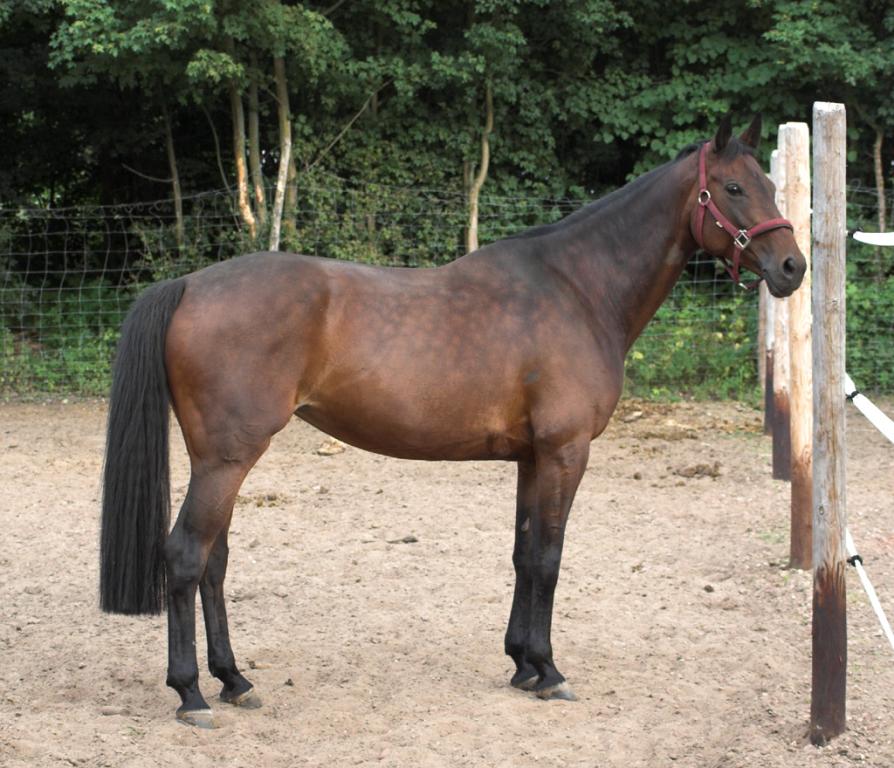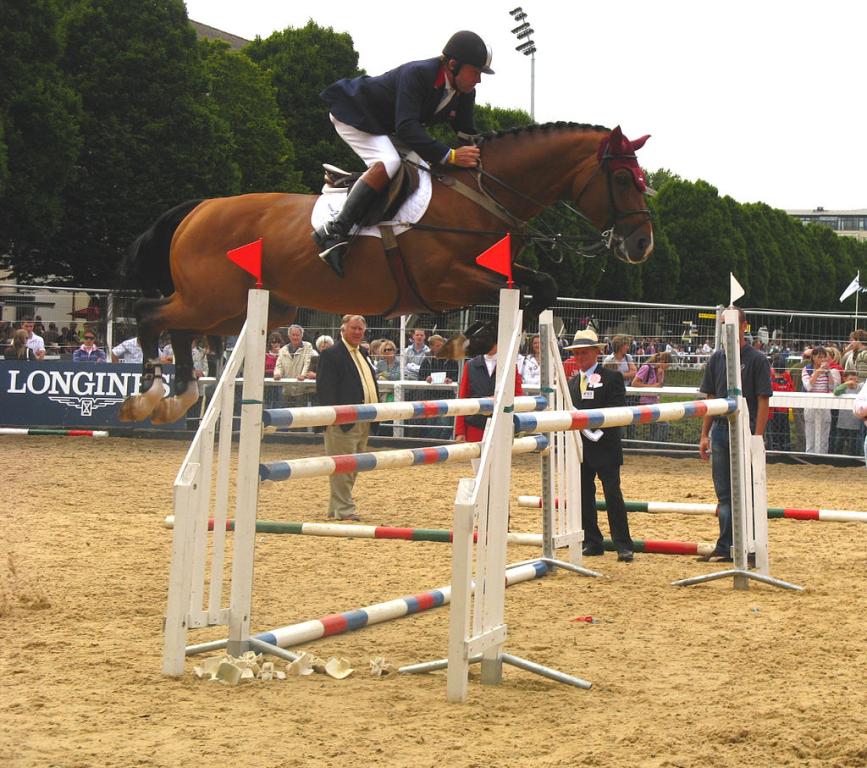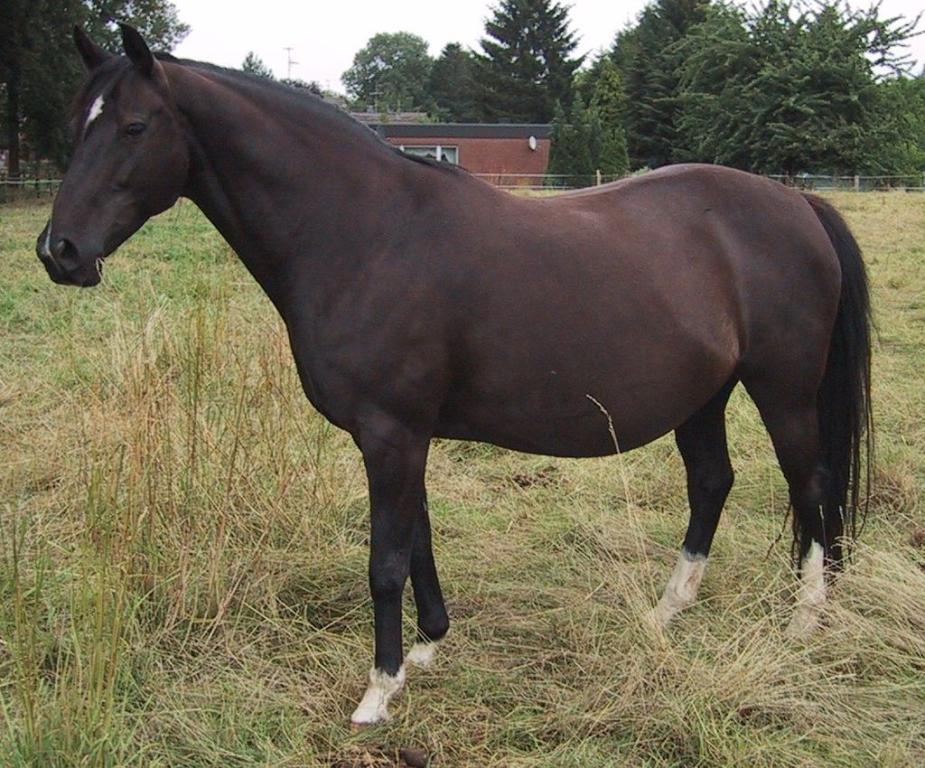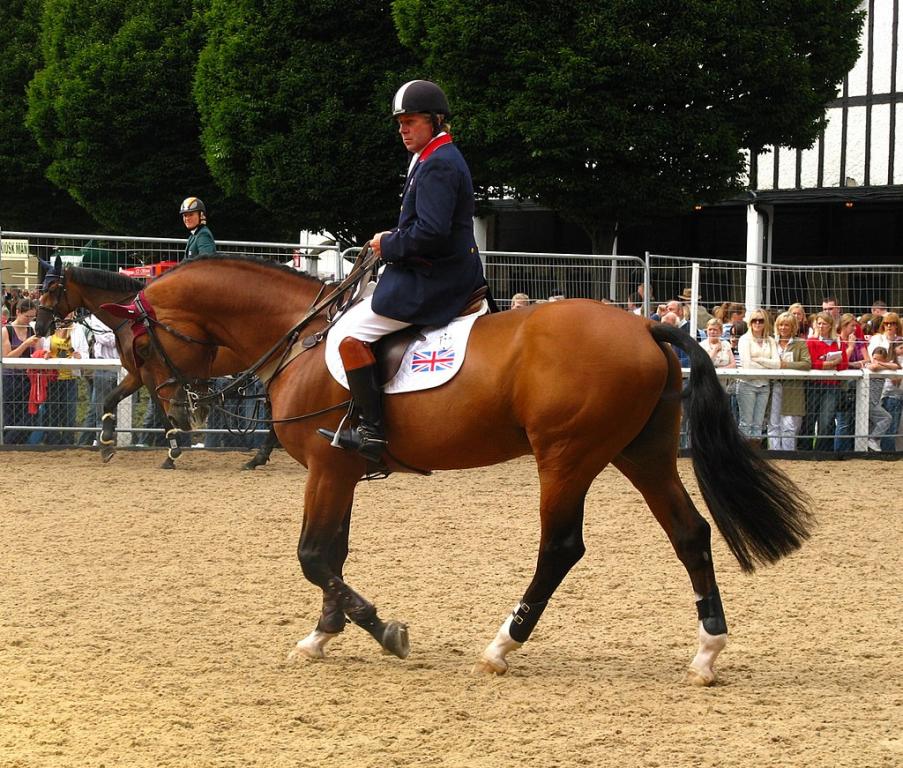
Continent: Europe
Country: Germany
Weight: 600 – 700 kg
Height: 165 – 178 cm



The Oldenburg takes its name from the former region of the Grand Duchy of Oldenburg, located in northwestern Germany, between East Friesland and present-day Lower Saxony.
Originally, this breed was a powerful carriage horse, highly valued for its presence and pulling strength. Since the 17th century, the dukes of Oldenburg played a major role in structuring the breeding program, encouraging crosses with Andalusian, Friesian, and later English horses.
This constant pursuit of improvement made the Oldenburg one of the first European horses to have an organized studbook.
Over time, as needs evolved, the breed was redirected towards sport, notably thanks to the introduction of Thoroughbred, Hanoverian, and Trakehner bloodlines in the 20th century. Today, the Oldenburg is recognized as a modern, athletic, and elegant sport horse, bred throughout Germany and far beyond.
The breeding of the Oldenburg has historically been concentrated in the northwestern region of Germany, specifically in the federal states of Lower Saxony and the Free Hanseatic City of Bremen, with a focal point in the Oldenburg district. The city of Vechta, the official seat of the Oldenburg studbook, is today a major center for selection, training, and auctions.
These fertile and well-irrigated agricultural areas have long favored the breeding of powerful and enduring horses. Nowadays, the breed has widely spread across Europe, notably to the Netherlands, France, Belgium, and Scandinavia, as well as to the United States and Canada, where branches of the Oldenburg studbook supervise affiliated breeding programs. This global expansion has helped to broaden the genetic base while maintaining high quality and performance standards.
The Oldenburg holds an important place in the genetic improvement of modern sport horses. Thanks to a rigorous selection process carried out since the early 20th century, it has been used to introduce sought-after qualities such as flexibility, power, scope of movement, and trainability.
The Oldenburg studbook is one of the most open in Europe, which has allowed the integration of high-performance bloodlines from the Thoroughbred, Hanoverian, Selle Français, Trakehner, and KWPN, while maintaining a homogeneous type. Many influential Oldenburg stallions have been widely used in other studbooks, making this breed a cornerstone of European genetics for show jumping and dressage.
The Oldenburg is one of Germany’s oldest organized breeds, with origins dating back to the 17th century. At that time, under the guidance of Dukes John XVI and Anton Günther of Oldenburg, an ambitious breeding program was established to produce powerful, elegant, and enduring carriage horses suited to the rough roads of northern Europe. These horses were prized for their pulling strength, noble carriage, and impressive gait, often used by nobility or for military parades.
The initial selection was based on crosses between sturdy local mares and stallions from Spanish, Neapolitan, Friesian, and later English breeds. In 1861, studbook administration was centralized in Vechta, which remains the heart of the breeding program today. By the end of the 19th century, the Oldenburg was recognized as a luxury horse, exported throughout Europe, with carriage driving competitions very popular at the time.
However, the arrival of the internal combustion engine in the early 20th century marked a turning point for the breed: heavy draft horses lost their utility in cities and rural areas. After World War II, the Oldenburg faced a critical period. Breeders made the strategic decision to redirect the breed toward a sport saddle horse, gradually introducing bloodlines from the Thoroughbred, Trakehner, Hanoverian, Selle Français, and KWPN. This bold shift marked the breed’s revival, becoming within decades a model of versatility and performance in Olympic disciplines.
Since the 1970s, the Oldenburg studbook has stood out with a policy of controlled openness, promoting genetic innovation without sacrificing the breed’s elegance and balance. Famous bloodlines such as Sandro Hit, Rubinstein, Don Schufro, and For Pleasure have made a mark on the international scene, giving the breed global visibility.
Today, the Oldenburg embodies modernity while respecting a tradition of excellence over 300 years old, continuing to evolve with sporting demands while maintaining a strong morphological and behavioral identity.
The Oldenburg is renowned for its balanced, cooperative, and willing temperament, making it a highly appreciated sport horse among both professionals and amateurs. It stands out for its high intelligence, quick learning ability, and eagerness to please. In both dressage and show jumping, it demonstrates strong responsiveness to aids and a remarkable work ethic, without being overly sensitive.
Its honesty under saddle and natural calmness make it a reliable partner, even in competitive or stressful environments. Moreover, the rigorous selection conducted over several generations tends to exclude horses that are too nervous, unstable, or aggressive, enhancing the breed’s consistency of character. The Oldenburg is often described as "cool in the head and hot in the body": calm and manageable on the ground, yet energetic and expressive during work. It suits both experienced riders seeking performance and more amateur profiles looking for a versatile, generous, and safe horse.
The Oldenburg benefits from very favorable prospects, thanks to a dynamic and internationalized selection. Its versatility as a sport horse, harmonious conformation, and balanced temperament make it a highly sought-after breed by both professional riders and amateurs.
The strong involvement of the studbook in international dressage, show jumping, and driving circuits helps to establish the breed’s reputation in high-level competitions. Furthermore, the studbook’s strategy of genetic openness allows constant adaptation to contemporary sporting demands without sacrificing the breed’s identity.
Global demand continues to grow, especially in North America, Eastern Europe, and Asia, where the Oldenburg is increasingly regarded as a benchmark. Finally, ongoing efforts regarding health, performance, and temperament promise a sustainable future for the breed on the international equestrian stage.
Overall, the Oldenburg is a robust and healthy breed, benefiting from rigorous selection in terms of both conformation and temperament. Breeders place great emphasis on the soundness of limbs, the quality of correct leg alignment, and the strength of tendons, which are essential for the sport disciplines in which the breed excels.
However, like any sport horse derived from high-performance crosses, some genetic predispositions may exist, notably an increased risk of tendon fragility in horses that are worked too early, as well as desmitis (ligament inflammation). Some older bloodlines may present rare cases of degenerative joint diseases or Wobbler syndrome (cervical spinal cord compression), although these conditions are now actively monitored and controlled by the studbooks.
Mare fertility and stallion longevity are considered good, and the breed does not show any widely recognized major hereditary diseases. A balanced diet, appropriate veterinary care, and careful management of work are key to preserving the Oldenburg’s long-term health.
The walk is free, regular, and relaxed, with good back swing. In the Oldenburg, it is often fluid, with natural engagement, which is essential for dressage tests and basic work.
The Oldenburg’s extended trot is particularly spectacular: characterized by large amplitude, strong hind propulsion, and pronounced knee elevation, while maintaining regularity and suppleness. It is an iconic gait in dressage, highly appreciated by judges for its rhythm and energy.
The Oldenburg’s canter is naturally round, energetic, and balanced, with good shoulder elevation and powerful hind engagement. This gait, easy to collect, is ideal for quick transitions and flying changes.
Born on 01/01/1993
1999 World Champion Young Horse, sire of an exceptional dressage lineage (Stedinger, Sir Donnerhall, Sandro Song...). His offspring dominate high-level sales across Europe.
Born on 01/01/1986
International Grand Prix dressage competitor, considered one of the best sires of the 20th century. He passed on a supple gait and excellent temperament.
Born on 01/01/1993
Team bronze medalist at the 2008 Beijing Olympics for Denmark. Also one of the top stallions for producing dressage horses.

Famous for many years as the Queen of Great Britain's royal carriage horse, the Oldenburg, one of the oldest warm-blood breeds in Europe, originated in a relatively small breeding area in the far northwest of Germany, which corresponds to the former Kingdom of Oldenburg, hence its name.

Gentle and gentle, the Oldenburg is a precocious horse with excellent longevity. It has many qualities: it is an energetic, reliable, willing, and balanced horse that demonstrates endurance and courage.